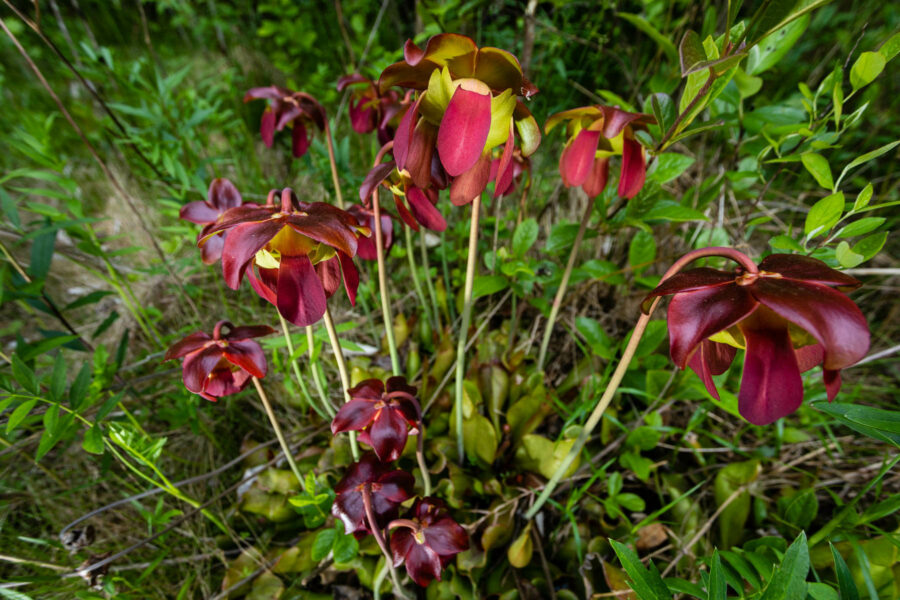Magnolia bogs are a trove of rare wetlands species

Just outside Washington, D.C., is a sliver of an ecosystem that was never common but today is exceedingly rare. In terms of size, the wetlands at Suitland Bog Natural Area are a relative postage stamp within the roughly 60 acres of woods that surround and protect them. But they hold a high number of rare or threatened plants, like the carnivorous northern pitcher plant, that lures insects to the slippery edges of its water-holding leaves before slowly digesting its drowned prey.
Suitland Bog is one of the last remaining examples of about 30 magnolia bogs that once existed in the metropolitan area of Washington, D.C. Named for the presence of sweet bay magnolia, they support other plants like wild raisin, highbush blueberry, sphagnum moss, bog fern and sundew, which also traps insects. Though pitcher plants once existed at other sites locally, these have all been wiped out; Suitland Bog never had them before some of the same species were transplanted from New Jersey.
Most magnolia bog wetlands have fallen victim to development. In the 1970s, Suitland Bog was slated for a similar fate—to become sports fields and picnic areas.
Today, Suitland Bog is still protected by a buffer of forested land but is surrounded on three sides by homes and townhomes, and Suitland Parkway along the fourth. And even though the land itself is protected, the actions of those living in the Suitland Bog’s watershed can still have an impact.
That’s in large part because of how magnolia bogs form. Technically, they are not bogs, which receive water directly from precipitation, but rather a type of acidic, fen-like seep that forms when groundwater filters through an uphill sand and gravel aquifer and hits an impenetrable layer of clay. Many magnolia bogs have been destroyed by the development and disturbance of the gravel terraces—natural, step-like landforms—that supply them with water.
Mining of sand and gravel near Suitland Bog occurred in the 1960s, but the Maryland-National Capital Park and Planning Commission purchased the land from the mining company in 1975. And the Commission’s planning documents for Prince George’s County, where the bog is located, directs activities to “maintain ground water flow to the bog, limit surface water flooding of the blog, and reduce or eliminate sediment reaching the bog.” Though a gate to the natural area’s entrance is kept locked to discourage illegal dumping, the bog is open daily and features a trail leading to a boardwalk through the wetland. The plants are not labeled, to discourage illegal harvest.
Suitland Bog is considered a relic community of a distant past when many of the same plants stretched along much of the East Coast. But when you visit, the concentration of biodiversity makes that feel like a fantastic notion. Such an alien assemblage—unknown even to longtime residents of the area—would make for an unrecognizable landscape if allowed its former expanse.

Comments
There are no comments.
Thank you!
Your comment has been received. Before it can be published, the comment will be reviewed by our team to ensure it adheres with our rules of engagement.
Back to recent stories